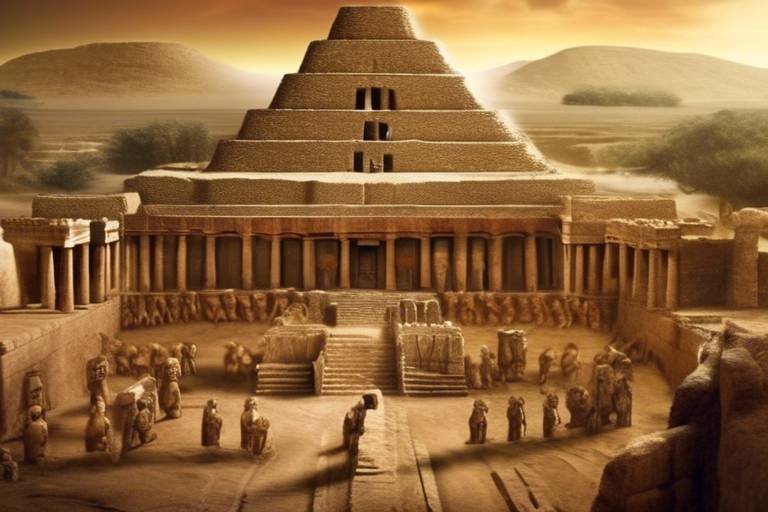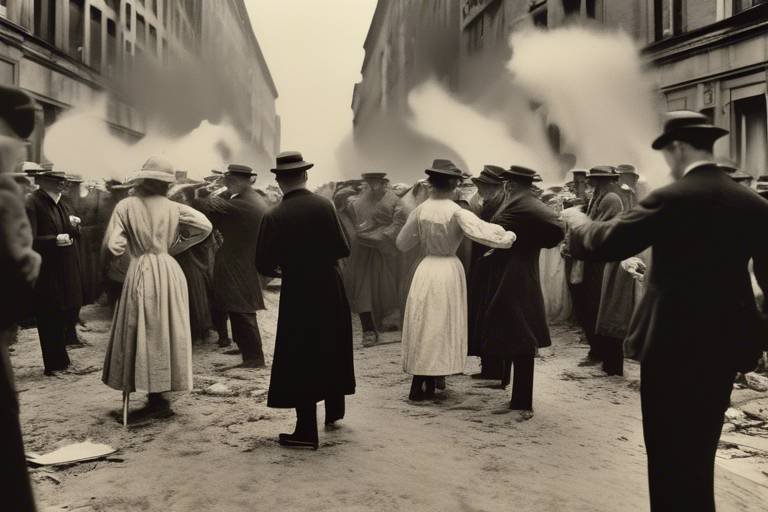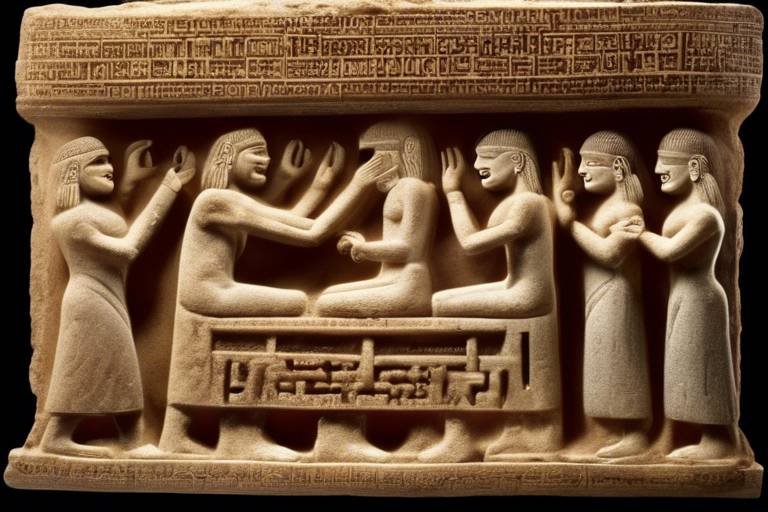The Role of Social Media in Heritage Awareness
Social media has revolutionized the way we perceive and engage with our cultural heritage. By harnessing the power of platforms like Facebook, Instagram, and Twitter, heritage sites have been able to transcend physical boundaries and connect with a global audience like never before. Through captivating visuals, compelling stories, and interactive content, social media has become a powerful tool for raising awareness about the importance of preserving our shared heritage.
One of the key advantages of social media in heritage awareness is its ability to engage with diverse audiences worldwide. Heritage sites can now showcase their rich history and cultural significance to people from all corners of the globe, sparking curiosity and fostering a sense of connection. This widespread engagement not only promotes cultural preservation efforts but also cultivates a deeper appreciation for the value of our heritage.
Moreover, social media platforms have opened up new avenues for heritage sites to offer virtual tours and digital exhibits. Through stunning imagery, immersive videos, and interactive features, sites can provide virtual experiences that rival physical visits. This accessibility not only makes cultural heritage more inclusive but also ensures that individuals who may not have the opportunity to visit in person can still partake in the beauty and history of these sites.
Community involvement and participation are also crucial aspects of heritage preservation, and social media plays a pivotal role in facilitating these connections. By providing a space for dialogue, storytelling, and collaboration, platforms enable communities to come together in support of conservation initiatives. From sharing personal anecdotes to mobilizing resources, social media empowers individuals to actively contribute to the safeguarding of our heritage.
Furthermore, social media serves as a powerful educational tool for raising awareness about the significance of cultural heritage. Heritage organizations leverage these platforms to launch awareness campaigns, share historical insights, and highlight the importance of preserving our past for future generations. Through engaging content and informative posts, social media acts as a digital classroom, imparting knowledge and fostering a sense of responsibility towards heritage conservation.
In addition to education and engagement, social media has become a hub for crowdsourcing and fundraising efforts in the realm of heritage preservation. Platforms like Twitter and crowdfunding sites provide a global stage for heritage projects to gather support and secure funding. By tapping into the collective power of online communities, heritage sites can finance restoration projects, conservation initiatives, and archival efforts, ensuring the longevity of our cultural treasures.
As we navigate the digital age, social media also plays a crucial role in the preservation of cultural heritage through digital documentation. By serving as digital archives, platforms store valuable information, artifacts, and historical records, safeguarding them for future generations. This digital preservation not only ensures the longevity of our heritage but also facilitates research, exploration, and discovery in the virtual realm.
However, the integration of social media in heritage awareness comes with its own set of challenges and ethical considerations. Issues such as maintaining authenticity, safeguarding privacy, and preventing commercial exploitation require careful navigation and thoughtful decision-making. Balancing the benefits of social media with the need to uphold ethical standards is essential in ensuring that our heritage is respected, protected, and celebrated responsibly.
Looking ahead, the future of social media in heritage awareness holds exciting possibilities with emerging technologies like augmented reality and interactive storytelling. These innovations promise to revolutionize the way we engage with cultural heritage, offering immersive experiences, dynamic narratives, and interactive learning opportunities. By embracing these advancements, heritage sites can captivate audiences, preserve traditions, and forge new connections that transcend time and space.

Engagement with Global Audiences
This article explores how social media platforms contribute to raising awareness about heritage sites and cultural preservation. It delves into the various ways in which social media can be utilized to promote and protect our shared heritage.
Social media plays a pivotal role in connecting heritage sites with a vast and diverse global audience. Through platforms like Facebook, Twitter, and Instagram, these sites can transcend geographical boundaries and capture the interest of individuals from all corners of the world. Imagine a virtual gateway that opens up to a global village, where people from different cultures and backgrounds come together to appreciate and support the preservation of our rich heritage.

Virtual Tours and Digital Exhibits
This article explores how social media platforms contribute to raising awareness about heritage sites and cultural preservation. It delves into the various ways in which social media can be utilized to promote and protect our shared heritage.
Social media enables heritage sites to reach a wider and more diverse audience globally, fostering interest and engagement in cultural preservation efforts.
Platforms like Instagram and Facebook allow heritage sites to offer virtual tours and showcase digital exhibits, making cultural experiences accessible to a broader audience. Through visually engaging content, users can explore historical sites and artifacts from the comfort of their own homes. These virtual tours provide an immersive experience, allowing individuals to connect with heritage sites regardless of their physical location.
Social media facilitates community engagement in heritage preservation by providing a platform for discussions, sharing stories, and mobilizing support for conservation initiatives.
Heritage organizations leverage social media for educational campaigns, raising awareness about the significance of cultural heritage and the need for its protection.
Platforms like Twitter and crowdfunding sites enable crowdsourcing efforts for heritage projects, facilitating fundraising and garnering support from a global network of enthusiasts.
Social media platforms serve as digital archives for heritage sites, preserving cultural artifacts and historical information for future generations.
The use of social media in heritage awareness poses challenges such as authenticity, privacy concerns, and the risk of commercialization, requiring careful navigation and ethical considerations.
The future of social media in heritage awareness involves emerging technologies like augmented reality and interactive storytelling, offering new possibilities for engaging audiences and preserving cultural heritage.

Community Involvement and Participation
Social media has revolutionized the way communities engage in the preservation of heritage sites. It provides a platform for individuals to actively participate in discussions, share personal stories, and mobilize support for conservation initiatives. Through social media, heritage enthusiasts from around the world can come together to celebrate and protect our shared cultural legacy.
One of the key benefits of community involvement through social media is the ability to create a sense of belonging and ownership among stakeholders. By fostering a community of like-minded individuals passionate about heritage preservation, social media platforms empower people to take an active role in safeguarding cultural sites for future generations.
Moreover, social media facilitates the democratization of heritage conservation efforts by allowing diverse voices to be heard. Communities can collectively advocate for the protection of endangered sites, lobby for policy changes, and collaborate on grassroots initiatives that promote cultural heritage awareness.
By encouraging community participation through social media, heritage organizations can tap into a wealth of knowledge and resources. Individuals with specialized skills or unique insights can contribute their expertise to conservation projects, enriching the collective effort to safeguard our cultural heritage.
Through interactive campaigns and collaborative projects, social media fosters a sense of unity and shared purpose among heritage enthusiasts. By actively engaging with online communities, individuals can forge connections, build relationships, and work together towards a common goal of preserving our rich cultural heritage.
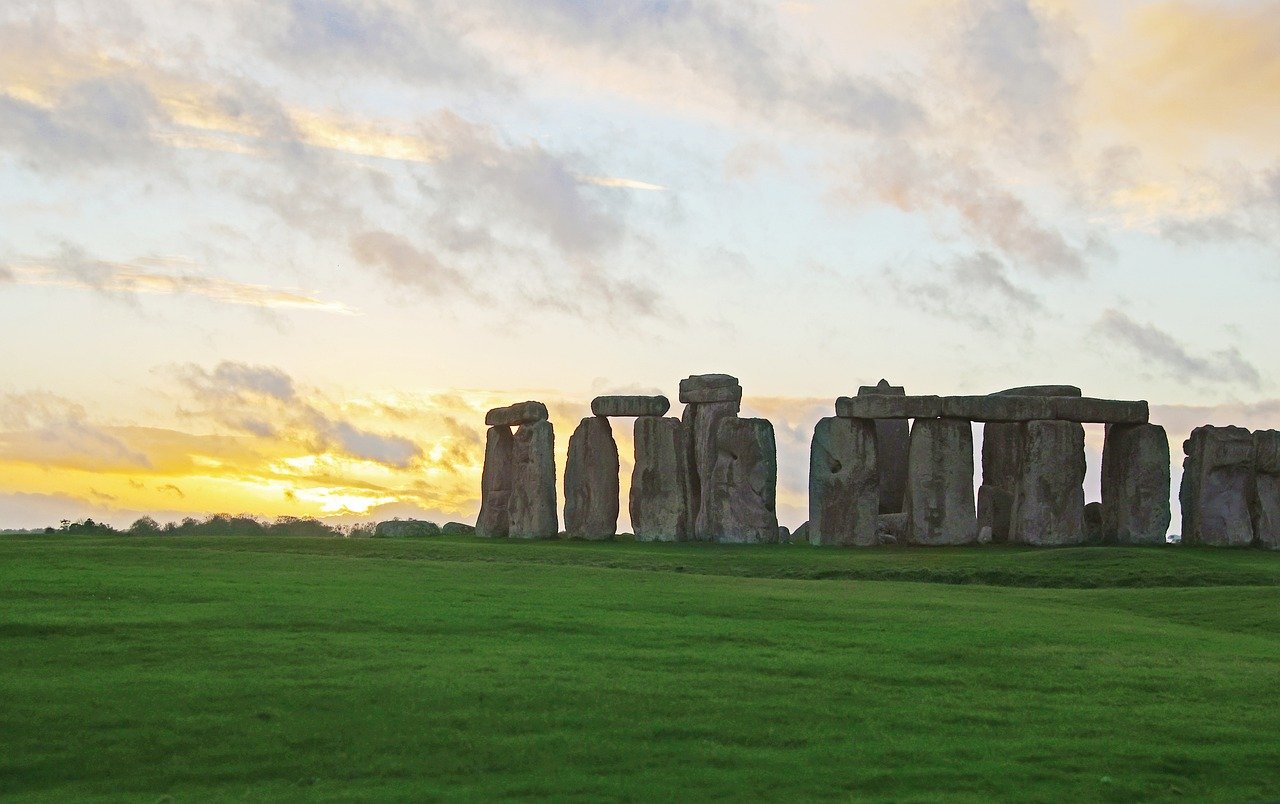
Education and Awareness Campaigns
Education and awareness campaigns play a crucial role in leveraging social media for promoting cultural heritage. Through engaging content and interactive initiatives, heritage organizations can effectively educate the public about the significance of preserving our shared history. By utilizing platforms like Instagram and Facebook, these campaigns can reach a vast audience, sparking interest and fostering a sense of responsibility towards cultural conservation.
One effective strategy is to create visually appealing posts that highlight the historical importance of heritage sites, coupled with informative captions that convey the stories behind these cultural treasures. By incorporating multimedia elements such as videos and virtual tours, organizations can offer immersive experiences that transport audiences to different eras and locations, enhancing their understanding and appreciation of heritage.
Furthermore, educational campaigns can involve collaborations with experts in the field, hosting live Q&A sessions, and sharing behind-the-scenes glimpses of conservation efforts. By encouraging active participation through quizzes, challenges, and interactive polls, social media platforms become dynamic spaces for learning and dialogue, fostering a sense of community among heritage enthusiasts.
Moreover, these campaigns can raise awareness about the threats facing heritage sites, such as climate change, urban development, and neglect. By shedding light on these challenges, organizations can mobilize support for conservation projects, encouraging individuals to take action and contribute to the preservation of cultural heritage for future generations.
In conclusion, education and awareness campaigns on social media serve as powerful tools for instilling a sense of pride and responsibility towards our cultural legacy. By harnessing the reach and engagement capabilities of these platforms, heritage organizations can effectively communicate the value of preserving our shared heritage, ensuring its protection and appreciation for years to come.
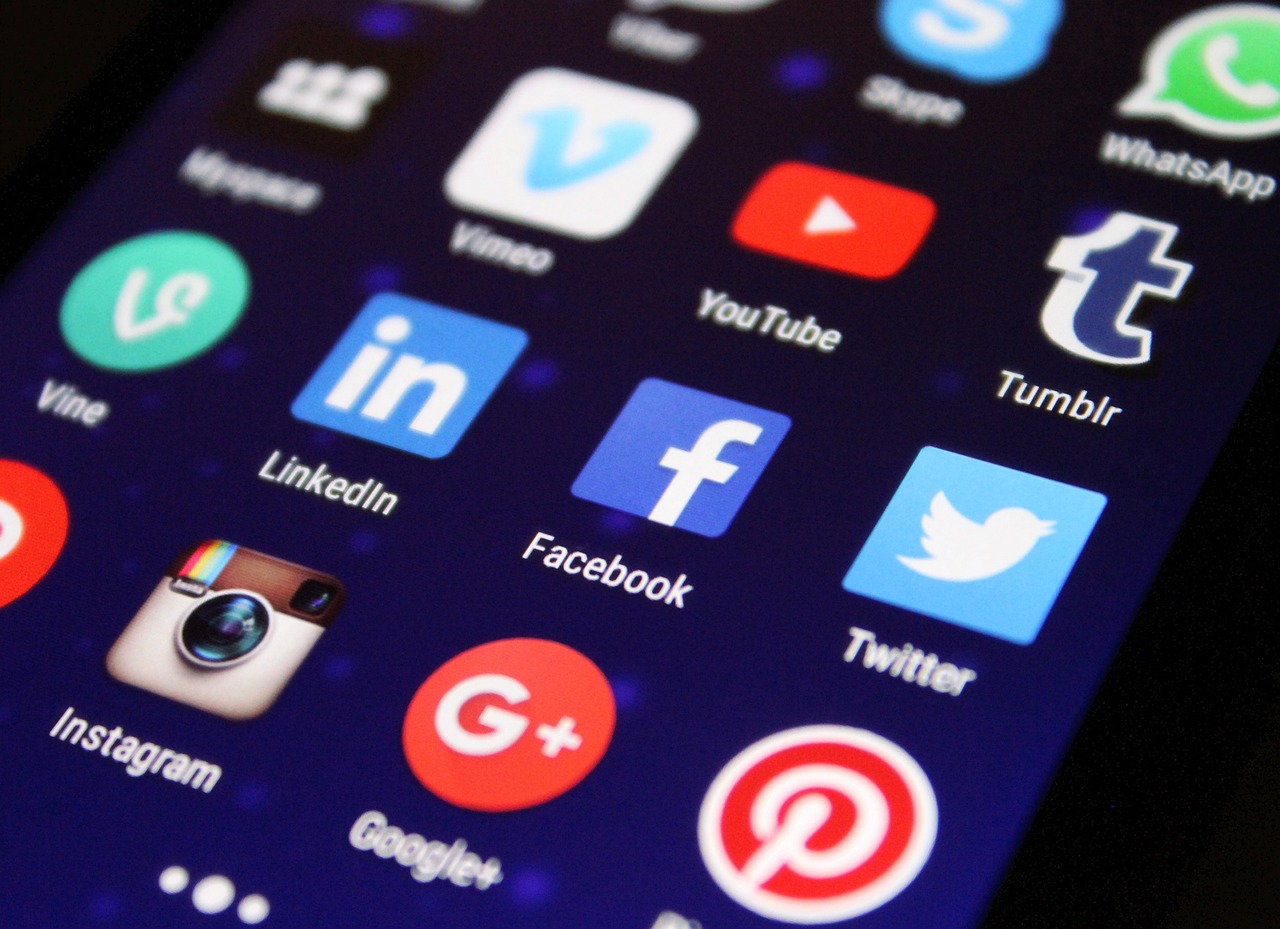
Crowdsourcing and Fundraising
This article explores how social media platforms contribute to raising awareness about heritage sites and cultural preservation. It delves into the various ways in which social media can be utilized to promote and protect our shared heritage.
Social media enables heritage sites to reach a wider and more diverse audience globally, fostering interest and engagement in cultural preservation efforts.
Platforms like Instagram and Facebook allow heritage sites to offer virtual tours and showcase digital exhibits, making cultural experiences accessible to a broader audience.
Social media facilitates community engagement in heritage preservation by providing a platform for discussions, sharing stories, and mobilizing support for conservation initiatives.
Heritage organizations leverage social media for educational campaigns, raising awareness about the significance of cultural heritage and the need for its protection.
Social media platforms play a crucial role in crowdsourcing efforts for heritage projects. Platforms like Twitter and crowdfunding sites enable fundraising and garner support from a global network of enthusiasts. By leveraging the power of social media, heritage sites can secure the necessary funds for conservation projects and engage a wide range of supporters.
Social media platforms serve as digital archives for heritage sites, preserving cultural artifacts and historical information for future generations.
The use of social media in heritage awareness poses challenges such as authenticity, privacy concerns, and the risk of commercialization, requiring careful navigation and ethical considerations.
The future of social media in heritage awareness involves emerging technologies like augmented reality and interactive storytelling, offering new possibilities for engaging audiences and preserving cultural heritage.
Stay tuned for the FAQ section coming soon!

Preservation Through Digital Documentation
Social media platforms play a crucial role in the preservation of cultural heritage through digital documentation. These platforms serve as invaluable digital archives that store and showcase cultural artifacts and historical information, ensuring their preservation for future generations. By digitizing heritage sites and artifacts, social media helps in safeguarding these treasures from physical degradation or loss due to various factors such as natural disasters or human activities.
Through digital documentation on social media, heritage sites can be virtually preserved, allowing individuals from around the world to access and explore these cultural gems. This digital preservation not only enhances the visibility of heritage sites but also contributes to the dissemination of knowledge and appreciation for diverse cultures and histories.
Furthermore, social media platforms provide a dynamic space for the continuous updating and sharing of information related to heritage sites. This real-time documentation allows for the recording of ongoing conservation efforts, restoration projects, and new discoveries, keeping the global audience informed and engaged in the process of heritage preservation.

Challenges and Ethical Considerations
This article explores how social media platforms contribute to raising awareness about heritage sites and cultural preservation. It delves into the various ways in which social media can be utilized to promote and protect our shared heritage.
Social media enables heritage sites to reach a wider and more diverse audience globally, fostering interest and engagement in cultural preservation efforts.
Platforms like Instagram and Facebook allow heritage sites to offer virtual tours and showcase digital exhibits, making cultural experiences accessible to a broader audience.
Social media facilitates community engagement in heritage preservation by providing a platform for discussions, sharing stories, and mobilizing support for conservation initiatives.
Heritage organizations leverage social media for educational campaigns, raising awareness about the significance of cultural heritage and the need for its protection.
Platforms like Twitter and crowdfunding sites enable crowdsourcing efforts for heritage projects, facilitating fundraising and garnering support from a global network of enthusiasts.
Social media platforms serve as digital archives for heritage sites, preserving cultural artifacts and historical information for future generations.
The use of social media in heritage awareness poses challenges such as authenticity, privacy concerns, and the risk of commercialization, requiring careful navigation and ethical considerations. Maintaining the integrity and authenticity of heritage content shared on social media platforms is crucial to ensure accurate representation and respect for cultural heritage. Privacy concerns arise due to the sharing of personal stories and information related to heritage sites, necessitating clear guidelines on data protection and consent. Furthermore, the risk of commercialization looms over heritage sites, as the popularity gained through social media exposure may lead to exploitation for profit, highlighting the importance of ethical practices in content creation and promotion.
The future of social media in heritage awareness involves emerging technologies like augmented reality and interactive storytelling, offering new possibilities for engaging audiences and preserving cultural heritage.

Future Trends and Innovations
The future of social media in heritage awareness is an exciting realm filled with innovative trends and advancements. One such trend that is gaining momentum is the integration of augmented reality (AR) technology. AR allows users to superimpose digital information onto the real world, providing interactive experiences that bring heritage sites to life in ways never seen before. Imagine being able to walk through a historical site and see virtual reconstructions of ancient buildings or artifacts right before your eyes, enhancing the visitor's understanding and connection to the past.
Another innovation on the horizon is the use of interactive storytelling techniques. By combining multimedia elements such as videos, audio guides, and 3D models, heritage organizations can create immersive narratives that captivate audiences and make learning about history a truly engaging experience. These interactive storytelling methods have the potential to transport viewers back in time and evoke a deep sense of connection to the heritage being presented.
Furthermore, advancements in digital preservation technologies are revolutionizing the way cultural heritage is documented and shared. High-resolution imaging, 3D scanning, and virtual reality simulations are enabling more detailed and accurate representations of heritage sites, ensuring that future generations can explore and appreciate these treasures in unprecedented detail. The ability to digitally preserve and disseminate cultural heritage not only safeguards it from physical deterioration but also democratizes access to these important sites for a global audience.
As social media continues to evolve, we can expect to see even more creative applications that blend the virtual and physical worlds to enrich our understanding and appreciation of heritage. From interactive AR experiences to immersive storytelling platforms, the future trends and innovations in social media are poised to transform the way we engage with and preserve our cultural legacy.
Frequently Asked Questions
- How can social media platforms contribute to heritage awareness?
Social media platforms play a vital role in raising awareness about heritage sites and cultural preservation by reaching a global audience, facilitating virtual tours, promoting educational campaigns, and enabling crowdsourcing efforts for fundraising.
- What are some challenges associated with using social media for heritage awareness?
Challenges include concerns about authenticity, privacy issues, and the potential for commercialization of heritage sites. Navigating these challenges requires careful consideration and adherence to ethical standards.
- How does social media help in preserving cultural heritage for future generations?
Social media serves as a digital archive for heritage sites, allowing for the preservation of cultural artifacts and historical information in a digital format that can be accessed by future generations. It also enables interactive storytelling and innovative ways of engaging audiences.




